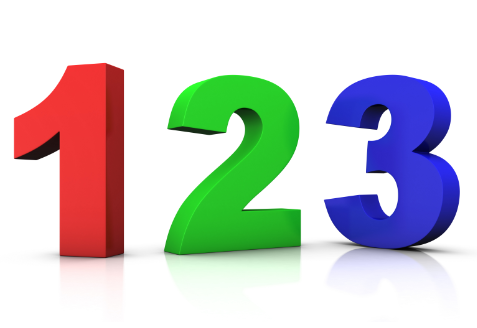Click on a concept below to try a sample question
Free, Printable Math
Worksheets for at-home Practice

Download this informative guide to learn how to best support your third grader as they learn and master important third grade math concepts.
Download Now 25+ Free Practice Worksheet questionsClick on a concept below to try a sample question
A stated objective of Common Core State Standards (CCSS) is to standardize academic guidelines nationwide. In other words, what third graders learn in math in one state should be the same as what students of the same age are learning in another state. The curricula may vary between these two states, but the general concepts behind them are similar. This approach is intended to replace wildly differing guidelines among different states, thus eliminating (in theory) inconsistent test scores and other metrics that gauge student success.
An increased focus on math would seem to include a wider variety of topics and concepts being taught at every grade level, including third grade. However, CCSS actually calls for fewer topics at each grade level. The Common Core approach (which is clearly influenced by “Singapore Math”—an educational initiative that promotes mastery instead of memorization) goes against many state standards. Many states mandate a “mile-wide, inch-deep” curriculum in which children are taught so much in a relatively short time span, that they aren’t effectively becoming proficient in the concepts they truly need to understand to succeed at the next level. Hence, CCSS works to establish an incredibly thorough foundation not only for the math concepts in future grades, but also toward practical application for a lifetime.
For third grade, Common Core’s focus places a tremendous emphasis on introductory multiplication. Fractions also make their first appearance, and two-dimensional shapes receive plenty of attention. Ultimately, this focus will enable children to develop rigor in real-life situations by developing a base of conceptual understanding and procedural fluency.

In third grade, Thinkster worksheets focus on four critical areas as recommended by CCSS:
Third grade is an absolutely essential year in terms of math education. Multiplication is a new concept to many students this age, but is one that must be mastered—the sooner, the better—because so much subsequent math, from fourth grade all the way through high school and beyond, will rely upon it. Of course, more complex addition and subtraction, introductory fractions, and geometry aren’t ignored, but multiplication (and, eventually, division) is the marquee attraction during this year. Here are the four critical areas that Common Core brings to third grade math:
 Multiplication
Multiplication
Students will develop fluency multiplying single-digit numbers. Strategies used include repeated addition (e.g., 4x3 is the same as 4+4+4), analyzing equal-sized groups, arrays, and area models, to arrive at a product. Students also will eventually learn the relationship between multiplication and division (though the really big Common Core push on division won’t occur until fourth grade).
 Fractions
Fractions
Fractions are another concept students will use for years to come. The idea of unit fractions (in which the numerator is 1, such as in ½) is introduced first. Visual models will be used to demonstrate that fractions are part of a whole. Adding and subtracting fractions won’t come until later grades, but students will be taught to visually compare fractions (for example, four friends dividing a pizza into four parts means each gets 1/4 of the pie; if they decided to divide into eight, each would get two slices; from this students see that 1/4 is greater than 1/8).
 Area
Area
Tied into multiplication is the concept of area— especially in the sense that the space covered by a square or rectangle is width times length. At first, students will compute area simply by counting unit squares. Eventually, Tthe rectangular arrays used to help with multiplication come into play (e.g., an array of 2 rows and 4 columns equals 8 units).
 Shapes
Shapes
Students will continue to identify and define two-dimensional shapes by sides and angles. Furthermore, the fraction concepts introduced in third grade will be tied into geometry—many of the visual models used will involve circles, triangles, and rectangles divided into equal parts.

From the four critical areas of focus discussed in the previous section, Common Core also further clarifies the skills third graders should know by the end of the school year. For example, the fluency requirements at this level are single-digit products and quotients (i.e., basic multiplication and division, with times tables committed to memory by the end of the year) and adding and subtracting within 1,000. The five topics presented here, taken directly from CCSS itself, include some specifics on what kids will be taught in third grade.

 Operations and Algebraic Thinking
Operations and Algebraic Thinking
• Represent and solve problems using multiplication and division. Students will learn to multiply single-digit numbers and divide numbers of less than 100 with whole quotients. They will also apply these strategies to solving word problems
• Understand the properties of multiplication and the relationship between multiplication and division. The concept that 7 × 3 is the same as 3 × 7 will be emphasized. Also, the complementary relationship between multiplication and division will be introduced—for example, if 7 × 3=21, then 21 ÷ 3 = 7.
• Multiply and divide numbers within 100. By the end of third grade, students will be expected to know by memory all single-digit multiplication operations (i.e., times tables), which in turn will provide fluency in division with these basic equations (in other words, easy division without remainders).
• Solve problems involving the four operations, and identify and explain patterns in arithmetic. Students will solve two-step word problems using the four basic operations (addition, subtraction, multiplication, and division) as well as by estimation strategies such as rounding. They will also identify and apply patterns within the math (for example, an odd number times an odd number will always produce an odd number).
 Number Operations in Base 10
Number Operations in Base 10
• Use place value understanding and properties of operations to perform multi-digit arithmetic. Students will strive toward fluently adding or subtracting numbers within a 1,000. They will master rounding numbers to the nearest 10 or 100, and they will also learn to multiply one-digit numbers by multiples of 10 but less than 100 (e.g., 6 × 40).


 Number Operations—Fractions
Number Operations—Fractions
• Solve problems involving measurement and estimation. Students will learn to tell time to the minute, as well as solve basic addition and subtraction word problems involving time. Estimating The concept of volume and mass is introduced explained, and third graders will be taught to solve one-step word problems with volumes or mass involving the same unit (for example, one cup holds 8 ounces of juice and another holds 6 ounces; how much total juice is there?).
Represent and interpret data. Third graders will draw scaled picture graphs to represent data (for example, a graph in which one square equals three of an object), and they will solve one- or two step “how many more?” and “how many less?” word problems. Also, they will use rulers to gather measurement data to within a quarter-inch and represent the results on a line plot.
 Geometry
Geometry
• Reason with shapes and their attributes. Different categories of shapes (e.g., quadrilaterals) will be explained, and students will classify shapes according to sides, angles, and so on. Coinciding with the introduction to fractions, third graders will partition shapes into parts with equal areas.

Some of parents’ trepidation with Common Core isn’t so much with the guidelines themselves, but with the testing now aligned with CCSS via local math curricula. Standardized testing was stressful for students and parents before; with the ongoing Common Core implementation, many families simply don’t know what to expect.
Fortunately, CCSS does not have to be that stressful, for you or your third grader. Here are some tips to help your children succeed with Common Core math:

 Be informed; be involved
Be informed; be involved
If Common Core concerns you, intrigues you, or confuses you, don’t hesitate to learn as much about it—in your child’s classroom, at your kids’ school, and on a national level. Talk with teachers, principals, and other parents. Seek advice on how you can help your kids, and yourself, navigate CCSS math. If you want to take further action, become involved with PTA or other organizations and committees that deal with your school’s curriculum. The more you know, the more, ultimately, you can help your child.
 Give them some real-world math
Give them some real-world math
A basic tenet of Common Core is to apply math principles to real-world situations. Why not start now? Give your child math problems when you are out and about—the store, in traffic, the park, and so on. For example, if you are at a basketball game and your child’s favorite player scores 6 points in the first quarter, ask her how many points the player might finish the game with based on that initial statistic.
 Take time to learn what they are learning
Take time to learn what they are learning
You might look at a worksheet your child brings home and think, “This isn’t the math I’m used to.” Because Common Core emphasizes understanding the process of arriving at an answer, your child may be taught additional ways to fry a mathematical egg, so to speak. Instead of shunning these approaches, learn them for yourself. Once you comprehend these additional methods, you will be better able to help your child comprehend them as well.
 Encourage them to show their work
Encourage them to show their work
This suggestion can be read two ways. First, students will be encouraged to show how they arrived at an answer, especially within Common Core. Second, ask your children to show you their homework, particularly the challenging stuff. Explaining how a problem is solved is a basic CCSS tenet, so if your kids can be confident in explaining their work to you, they will carry that confidence into the classroom when the teacher asks for those same explanations.
 Seek more help if necessary
Seek more help if necessary
If your third grader is struggling with the new math standards, talk with his or her teacher first. You then might want to seek outside resources to help your child. Several online resources provide math help, including worksheets and sample tests that conform to Common Core standards. Tutoring might be an option you consider as well. Innovative iPad based math programs have emerged that combine the personalized approach of a tutor with today’s technology. This revolutionary approach also may feature a curriculum based on Common Core, thus ensuring your child’s learning at home is aligned with what he or she is learning at school.
See up to a 90% Improvement in Math Scores Within 3 Months.
Start 7-Day Free Trial